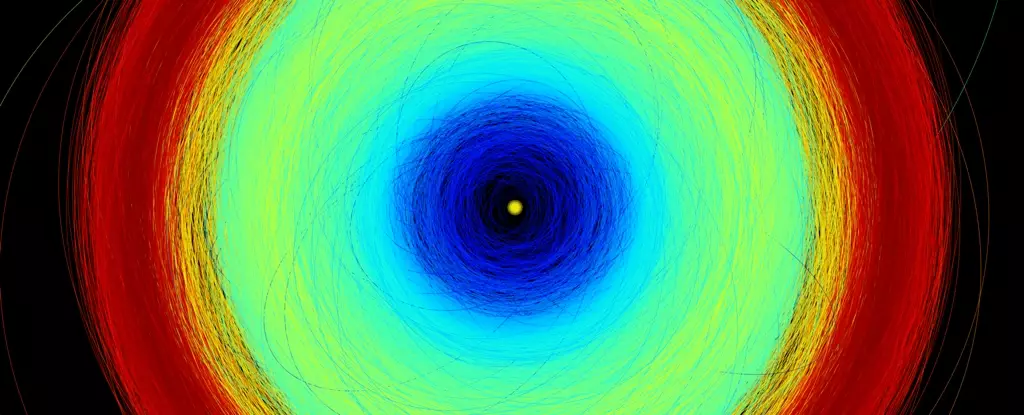The Gaia mission, known for its groundbreaking work in mapping stars in the Milky Way Galaxy, has also proven to be a formidable asteroid hunter. Recent reports indicate that Gaia has successfully located more moons of asteroids within our solar system. Upon confirmation of the Gaia data from its release 3, an additional 352 binary asteroids will be added to the existing count. This remarkable finding nearly doubles the known number of asteroids with moons, shedding light on the complexity of our solar system.
Traditionally viewed as a mundane aspect of astronomy, astrometry plays a crucial role in pinpointing the positions of celestial objects in space with precision. While not as glamourous as discovering new comets or charting galaxies, astrometry is essential for detecting elusive planetary systems around stars. Gaia’s remarkable astrometric abilities have been instrumental in not only identifying binary asteroids but also in examining the chemical composition of these celestial bodies.
The Solar System comprises an array of celestial objects, including planets, moons, rings, comets, and asteroids. These asteroids and comets, often considered remnants of planetary formation, offer valuable insights into the conditions of the original nebula where the Solar System took shape. Through the discovery of binary asteroids, it has become apparent that interactions between these celestial bodies play a significant role in shaping their orbits and compositions.
As Gaia continues to provide precise astrometric measurements of objects within our solar system, the study of asteroids and their moons enters a new era of exploration. By delving into the origins of binary asteroids and the mechanisms behind their formation, astronomers and planetary scientists are poised to uncover fresh insights into the evolution of these enigmatic objects. The ongoing collaboration between Gaia and other observatories holds the promise of unraveling the mysteries surrounding asteroids and their dynamic interactions.
Far from being a mundane exercise in astronomical bookkeeping, the study of asteroids and their moons opens a window into the intricate web of celestial bodies within our solar system. Gaia’s contributions to astrometry have revolutionized our understanding of binary asteroids, paving the way for further discoveries and advancements in asteroid research. As we continue to explore the depths of space, the revelations brought forth by missions like Gaia serve as a testament to the boundless wonders that await us in the cosmos.


Leave a Reply